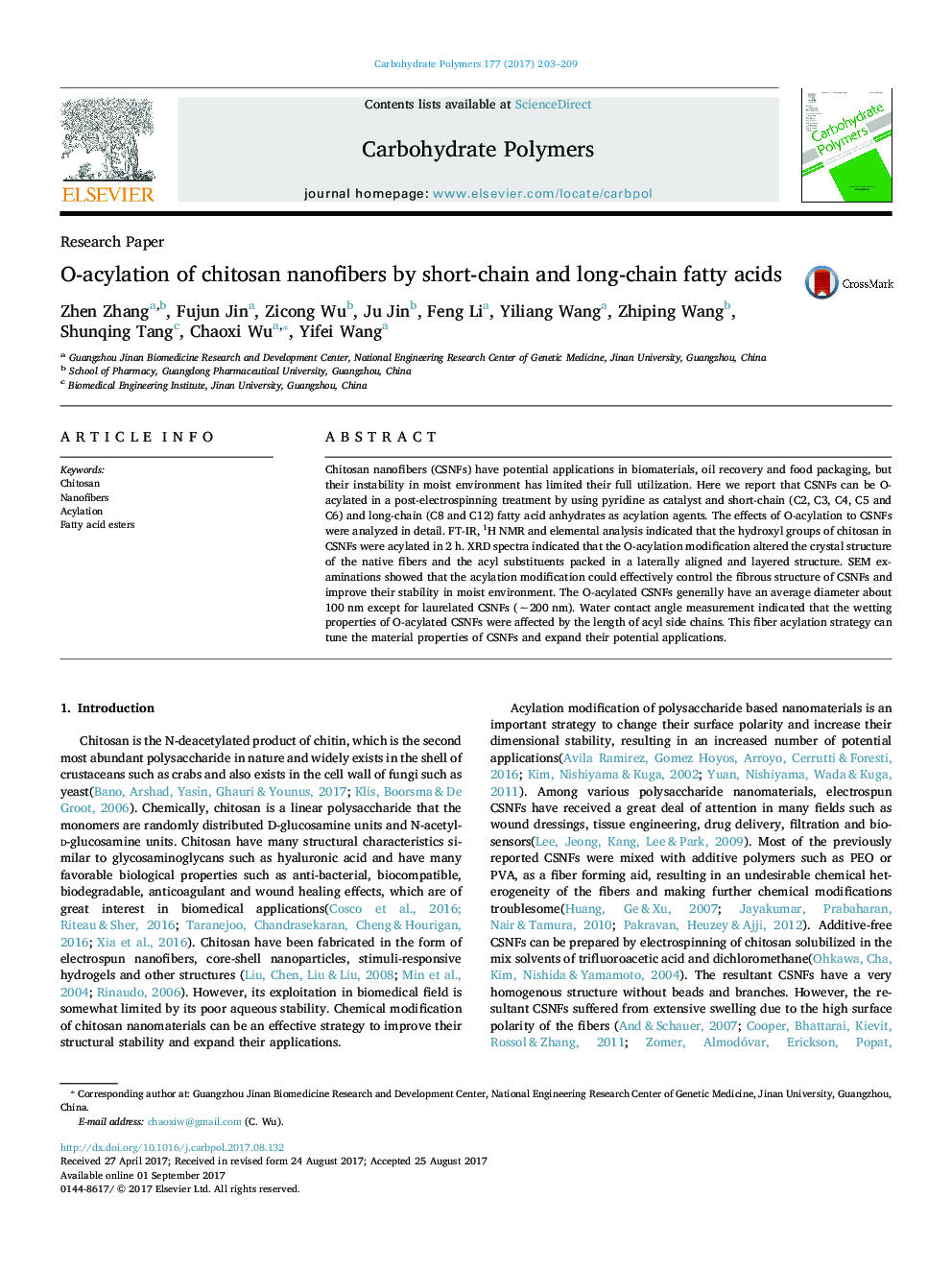| Article ID | Journal | Published Year | Pages | File Type |
|---|---|---|---|---|
| 5156496 | Carbohydrate Polymers | 2017 | 7 Pages |
Abstract
Chitosan nanofibers (CSNFs) have potential applications in biomaterials, oil recovery and food packaging, but their instability in moist environment has limited their full utilization. Here we report that CSNFs can be O-acylated in a post-electrospinning treatment by using pyridine as catalyst and short-chain (C2, C3, C4, C5 and C6) and long-chain (C8 and C12) fatty acid anhydrates as acylation agents. The effects of O-acylation to CSNFs were analyzed in detail. FT-IR, 1H NMR and elemental analysis indicated that the hydroxyl groups of chitosan in CSNFs were acylated in 2Â h. XRD spectra indicated that the O-acylation modification altered the crystal structure of the native fibers and the acyl substituents packed in a laterally aligned and layered structure. SEM examinations showed that the acylation modification could effectively control the fibrous structure of CSNFs and improve their stability in moist environment. The O-acylated CSNFs generally have an average diameter about 100Â nm except for laurelated CSNFs (â¼200Â nm). Water contact angle measurement indicated that the wetting properties of O-acylated CSNFs were affected by the length of acyl side chains. This fiber acylation strategy can tune the material properties of CSNFs and expand their potential applications.
Related Topics
Physical Sciences and Engineering
Chemistry
Organic Chemistry
Authors
Zhen Zhang, Fujun Jin, Zicong Wu, Ju Jin, Feng Li, Yiliang Wang, Zhiping Wang, Shunqing Tang, Chaoxi Wu, Yifei Wang,
